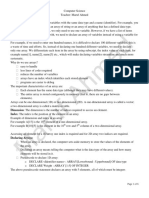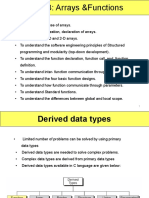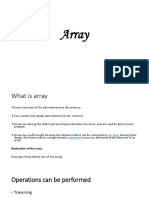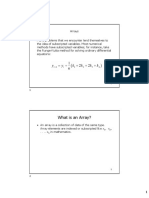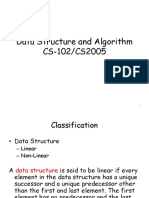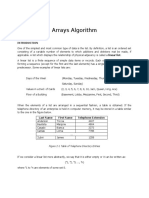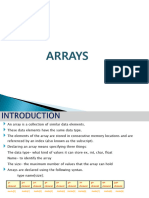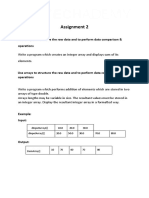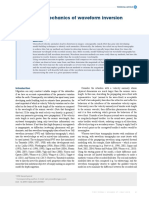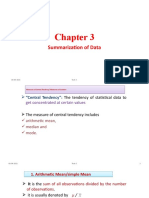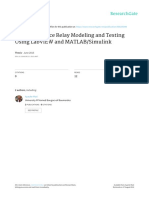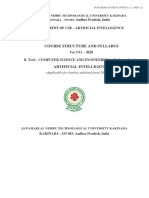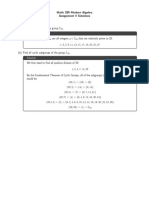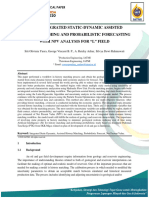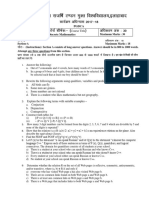0% found this document useful (0 votes)
22 views11 pagesArrays and Linear Search - For Students
The document provides an overview of arrays in computer science, explaining their definition, types (one-dimensional and two-dimensional), and the benefits of using arrays such as easier handling and reduced variable count. It includes details on declaring arrays, accessing elements using indices, and examples of pseudocode for initializing and manipulating arrays. Additionally, it covers how to store and display values in both one-dimensional and two-dimensional arrays through loops.
Uploaded by
pharhomesCopyright
© © All Rights Reserved
We take content rights seriously. If you suspect this is your content, claim it here.
Available Formats
Download as PDF, TXT or read online on Scribd
0% found this document useful (0 votes)
22 views11 pagesArrays and Linear Search - For Students
The document provides an overview of arrays in computer science, explaining their definition, types (one-dimensional and two-dimensional), and the benefits of using arrays such as easier handling and reduced variable count. It includes details on declaring arrays, accessing elements using indices, and examples of pseudocode for initializing and manipulating arrays. Additionally, it covers how to store and display values in both one-dimensional and two-dimensional arrays through loops.
Uploaded by
pharhomesCopyright
© © All Rights Reserved
We take content rights seriously. If you suspect this is your content, claim it here.
Available Formats
Download as PDF, TXT or read online on Scribd
/ 11


